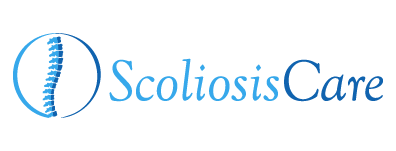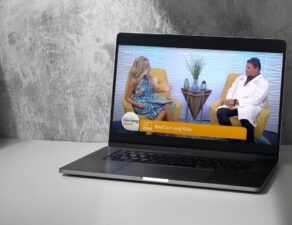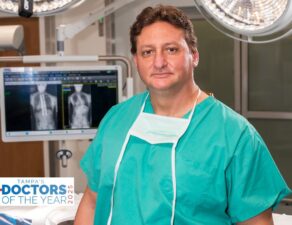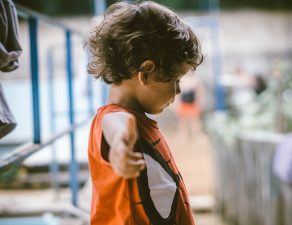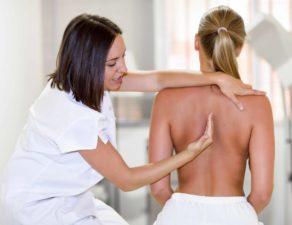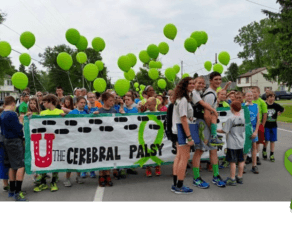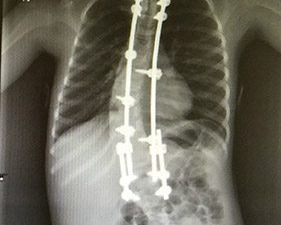
by Irene Maher, Times Staff Writer
Kelly Wagenhurst always knew her little girl would face challenges.
Born with Turner syndrome, a genetic condition that can lead to a variety of health issues, Alyssa Best, now 9, still was a bright and happy child.
Then her spine started curving. At first, a scoliosis brace kept things under control.
But last year, the S-curve became unstoppable.
“It seemed to change overnight,” says Wagenhurst, 29.
Alyssa’s scoliosis was so severe she could hardly walk. As her spine grew more bent, her heart and lungs were running out of room to function properly.
The curve progressed from 45 degrees — the threshold when doctors start talking about surgery — at the beginning of 2009. Two months later, in March, it was 55 degrees; by June, it was 65 degrees.
Wagenhurst, who lives in Zephyhrills, took her daughter to several Tampa Bay area surgeons, but because of the complexity of Alyssa’s medical history, none would take her case. And disputes with her health insurance company only exacerbated her search for help.
Then she was referred to Dr. David Siambanes, a newcomer to St. Joseph’s Children’s Hospital in Tampa who specializes in pediatric spine problems. After an exhaustive round of tests and scans, Siambanes had a verdict.
“He said he could fix her. Those were his words,” recalls Wagenhurst, “And he said he would spend all his time trying to figure it out and we are going to get her to have a normal life.”
• • •
The National Scoliosis Foundation estimates that 6 million Americans have an abnormally curving spine. Though anyone can be affected, onset is usually between the ages of 10 to 15 and girls are at higher risk than boys. It is associated with certain conditions such as Turner’s but, in most cases, scoliosis appears on its own for no known cause.
Baby boomers will likely remember being lined up at school so a nurse could check back, shoulders and hips for signs of scoliosis. School nurses aren’t so plentiful these days, but the signs are clear enough that many cases still are found by nurses, teachers, coaches or parentsbox).
Detecting curvature of the spine by middle school age, before the next big adolescent growth spurt, can prevent pain, disability or surgery down the road.
The majority of scoliosis patients have such a slight spinal curve that they require no treatment. Getting regular exercise and maintaining a healthy weight often are enough to keep associated back pain later in life at bay.
For those youngsters who do need treatment to stabilize the curvature, bracing is usually sufficient. Braces are made of custom-molded plastic and wrap around the torso, under the arms. They are usually worn 23 hours a day but can be taken off to bathe, swim or play sports. Siambanes says only a quarter of patients who need treatment ever require surgery.
The brace treatment has been pretty consistent for decades. But the surgery — which most experts agree is best done on young patients due to their more flexible spines — has changed dramatically in the past seven to 10 years.
“In the old, old days we used primitive (surgical) instruments, got modest correction, and kids were stuck in a body cast. It was just hideous,” Siambanes said.
Today, newer surgical screws and rods (which can be seen in Alyssa’s “after” X-ray), high-tech monitoring equipment and dedicated teams of spine specialists and technicians have revolutionized the surgery, making it safer and offering more dramatic corrections.
“You don’t even need a brace afterward anymore,” he said. “These kids are walking around in a couple of weeks like nothing was ever wrong and nothing happened.”
• • •
Alyssa’s surgery was scheduled for last month. By then, the curve had reached almost 90 degrees, making her case exceptional. Siambanes said he’d seen only a few such severe curves in the United States in more than 15 years of practice, although he had encountered more in the Dominican Republic, where he has done missionary work.
In Alyssa’s case, her curved spine was pushing her rib cage far out to the right and throwing her hips in the opposite direction.
The surgery was done in three major steps. Siambanes first had to make Alyssa’s spine more flexible by removing a disc between the bones of one vertebra. Then he placed large surgical screws in the spine and attached rods to them, allowing him to rotate and straighten the spine. Finally, he removed 3 centimeters of bone from her ribs to reshape her chest. “That really corrected her,” says Siambanes, “She looks phenomenal.”
Within two days she was out of bed with the help of a walker, and had ditched that within a week.
“We couldn’t keep her in bed. She was running all over the hospital,” her amazed mother recalls.
Five weeks after surgery, sporting a purple sundress and flip-flops, she darted around the back yard of her aunt’s Brandon home one day last week, happily playing with a 4-year-old cousin. The scar that stretches the length of her back is already fading, and she says she has no pain. Beyond that, she talks a lot more about her favorite pop stars than her surgery.
Siambanes, who came to Tampa in September after 10 years in California, says the specialists and the technology at St. Joseph’s helped him get such good results for Alyssa.
“I was going for a home run with Alyssa and I think I got it. While she’ll always be short because of her condition (Turner syndrome), at least she’ll be straight,” he says.
Irene Maher can be reached at imaher@sptimes.com or (813) 226-3416.
fast facts
Scoliosis: What to look for
Have your child stand up straight and look at her from the front and the back for:
• One shoulder higher than other
• One shoulder blade more prominent
• One hip higher than other
• Head not centered over pelvis
• Have her bend over, and see if one side of her back appears higher than the other.
Dr. David Siambanes says the last sign in the list is what many parents notice first. “I’ve had moms see it when they tell their kids to pick up socks from the floor,” he says. Parents may also notice that a child’s clothing hangs unevenly — say, you need to hem one pant leg more than the other — or otherwise doesn’t seem to fit properly.
Surgical advances get young scoliosis patient up and running 04/14/10 [Last modified: Wednesday, April 14, 2010 5:14pm]
